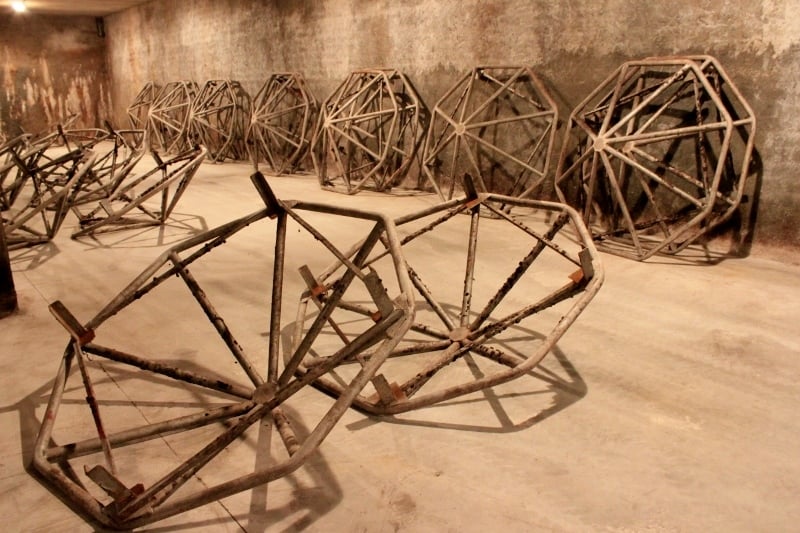Ahhh. The Cava caves of Spain; dark narrow tunnels, steep spiral staircases, a labyrinth that would challenge anyone’s sense of direction and filled to the stone ceiling with a winemakers dream. Even as gorgeous as the wine caves of my home in Northern California are, they didn’t quite compare to exploring the seemingly endless, channels of a Spanish Cava cave.
No disrespect NorCal. My heart will always be with you.
Traveling to Spain on a Cava tour, as a guest of Wine Pleasures, led to the opportunity to visit several of these intriguing caves. The main goal was not to get tantalized and lost in their depths, but to taste many of the bubblies that were deemed the 50 Great Cavas. I am up for that challenge.
What I realized very quickly, besides the fact that Cava is delightful, is that Cava caves are a bucket list worthy site to be seen.

Some Cava caves would make the perfect location to film a horror flick, while others could be used as a skilled mathematicians puzzle. How do you perfectly stack thousands of bottles of wine? Some housed the first vintage of cava they ever made, a tribute to the many more years to come. While others were more modern, projecting top notch promotional videos along a cava laced wall.
All intriguing. All unique. All a sign of passion. I like passion. Duh.
At Cava Gramona, in the heart of the Penedes, cob webs hung from the ceiling and dust layered the precious bottles that were being aged by hand. There are rooms that showcase the best and oldest of bottles and at the end of a perfectly symmetrical cava wall laid a special treat, a set table. We would be dining in a cava cave. But, that’s an entirely different story. Stay tuned.


I thought the bottles of Cava could not get anymore rustic until I walked into the cave at Bohigas, a family owned winery. Their hand-built cellar helps them to produce over a whopping 600,000 bottles.
Do not perform the white glove test in here. I am not sure how come the more grime in a Cava cave just makes it cooler and that same muck in my bathroom at home does not have the same affect?

What impressed me at Llopart was the sleek arrangement of bottles in their cave. Even though it was practical, it seemed more like a part of the architecture.
Mascaro had the most unique riddling equipment and I am using the term “equipment” loosely. To consolidate sediment, they were using a metal frame that needed to be manually shifted several times a day.

We all know how embarrassingly dedicated I am to my glass (maybe two) of jammy red wine, especially from my home in the Sonoma region, but Spanish Cava has now secured its place as a strong alternative, somewhere between Syrah and diet Coke.
Related
Get a Fish Pedicure in Sitges, Spain
Where to See the Absolute Best Flamenco Shows in Barcelona
Feel the Magic on Barcelona’s Montjuic Hill
Take a Segway Glide Through Barcelona
La Boqueria Market in Barcelona: The Best Food Market Near Ramblas
Have a Bucket List Worthy Afternoon in Sitges, Spain
Eat The Best Tapa in Barcelona, Spain

What a unique way to enjoy wine. I’ll have to remember this!
I love this and the pictures are great! It looks like a fun and interesting place to visit. I can’t believe they produce 600,000 bottles of wine, that’s amazing and I agree…the white glove test would not be a good idea in there!
Ooh, I’d love to have dinner in that cave!
whoa that’s really cool!
I have done something similar in Burgundy! What better way to learn about wine than to visit where it lived? :)
Loved your posts. Have followed you through twitter, Looking forward to see more from you :)
Thank you :)
Very very cool. One day I’d like to try some very very old wine just to see what the difference in taste is.
It would be really interesting to do a taste test with drastically different vintages of the same wine. I bet that older is not always better.